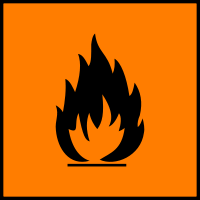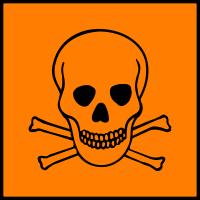|
RTECS
|
|
PA7350000
|
 Show
data source Show
data source
|
|
|
European Hazard Symbols
|
 Flammable (F) Flammable (F)
|
 Show
data source Show
data source
|
 Toxic (T) Toxic (T)
|
 Show
data source Show
data source
|
|
X
|
 Show
data source Show
data source
|
 Harmful (Xn) Harmful (Xn)
|
 Show
data source Show
data source
|
|
|
UN Number
|
|
1230
|
 Show
data source Show
data source
|
|
2664
|
 Show
data source Show
data source
|
|
UN2664
|
 Show
data source Show
data source
|
|
|
MSDS Link
|
|
|
German water hazard class
|
|
1
|
 Show
data source Show
data source
|
|
2
|
 Show
data source Show
data source
|
|
|
Hazard Class
|
|
3
|
 Show
data source Show
data source
|
|
6.1
|
 Show
data source Show
data source
|
|
|
Packing Group
|
|
2
|
 Show
data source Show
data source
|
|
3
|
 Show
data source Show
data source
|
|
III
|
 Show
data source Show
data source
|
|
|
Risk Statements
|
|
11-23/24/25-39/23/24/25
|
 Show
data source Show
data source
|
|
20-52/53
|
 Show
data source Show
data source
|
|
R20, R52/53
|
 Show
data source Show
data source
|
|
|
Safety Statements
|
|
24-61
|
 Show
data source Show
data source
|
|
7-16-36/37-45
|
 Show
data source Show
data source
|
|
S2, S24
|
 Show
data source Show
data source
|
|
|
TSCA Listed
|
|
是
|
 Show
data source Show
data source
|
|
|
EU Index
|
|
602-003-00-8
|
 Show
data source Show
data source
|
|
|
GHS Pictograms
|

|
 Show
data source Show
data source
|

|
 Show
data source Show
data source
|

|
 Show
data source Show
data source
|

|
 Show
data source Show
data source
|

|
 Show
data source Show
data source
|
|
|
GHS Signal Word
|
|
WARNING
|
 Show
data source Show
data source
|
|
Danger
|
 Show
data source Show
data source
|
|
Warning
|
 Show
data source Show
data source
|
|
|
NFPA704
|
|
|
 Show
data source Show
data source
|
|
|
LD50
|
|
>4 g kg-1 (dermal, rabbit)
|
 Show
data source Show
data source
|
|
1 g kg-1 (oral, rabbit)
|
 Show
data source Show
data source
|
|
3.738 g kg-1 (subcutaneous, mouse)
|
 Show
data source Show
data source
|
|
|
GHS Hazard statements
|
|
332, 412
|
 Show
data source Show
data source
|
|
H225-H301-H311-H331-H370
|
 Show
data source Show
data source
|
|
H332-H412
|
 Show
data source Show
data source
|
|
|
GHS Precautionary statements
|
|
273
|
 Show
data source Show
data source
|
|
P210-P260-P280-P301 + P310-P311
|
 Show
data source Show
data source
|
|
P261-P273-P271-P304+P340-P312-P501A
|
 Show
data source Show
data source
|
|
P273
|
 Show
data source Show
data source
|
|
|
Personal Protective Equipment
|
|
Eyeshields, Faceshields, full-face respirator (US), Gloves, multi-purpose combination respirator cartridge (US), type ABEK (EN14387) respirator filter
|
 Show
data source Show
data source
|
|
|
RID/ADR
|
|
UN 1230 3/PG 2
|
 Show
data source Show
data source
|
|
UN 2664 6.1/PG 2
|
 Show
data source Show
data source
|
|
UN 2664 6.1/PG 3
|
 Show
data source Show
data source
|
|
|
Storage Temperature
|
|
2-8°C
|
 Show
data source Show
data source
|
|